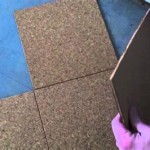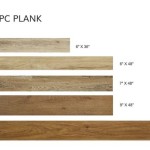Laminate Flooring Whitewash: A Comprehensive Guide
Whitewash laminate flooring offers a versatile and aesthetically pleasing alternative to solid hardwood. It mimics the look of whitewashed wood, providing a light, airy feel to any space while offering the durability and affordability associated with laminate construction. Understanding the nuances of whitewash laminate, including its design options, installation considerations, and maintenance requirements, is crucial for making an informed decision.
This article provides a comprehensive overview of whitewash laminate flooring, covering key aspects from its various types and styles to the proper methods for installation and maintenance. It aims to equip readers with the knowledge necessary to select, install, and maintain whitewash laminate flooring effectively, ensuring a long-lasting and visually appealing result.
Understanding Whitewash Laminate: Construction and Design
Laminate flooring, in general, is a multi-layered synthetic flooring product fused together through a lamination process. Whitewash laminate specifically incorporates a decorative layer that simulates the appearance of wood that has been treated with a whitewashing technique. This layer is a high-resolution photographic image, often digitally enhanced to replicate the grain patterns and textures of real wood.
The construction of laminate flooring typically consists of four primary layers. The first layer is the wear layer, which is a transparent, durable coating that protects the floor from scratches, stains, and fading. The thickness of the wear layer is measured in mils (thousandths of an inch) and directly impacts the floor's resistance to wear and tear. A thicker wear layer generally translates to greater durability and a longer lifespan.
Beneath the wear layer is the decorative layer, the visual component that dictates the floor's aesthetic. For whitewash laminate, this layer features the whitewashed wood design. The quality of the image and texture embossing significantly influences the realism and overall appeal of the flooring. High-quality whitewash laminate will exhibit realistic wood grain patterns and subtle color variations to emulate the natural look of whitewashed hardwood.
The core layer, situated below the decorative layer, constitutes the bulk of the laminate's thickness and provides structural stability. This layer is commonly composed of high-density fiberboard (HDF) or medium-density fiberboard (MDF). HDF is generally preferred due to its greater density and resistance to moisture, making it a more durable and long-lasting option compared to MDF.
Finally, the backing layer, also known as the balance layer, is the bottommost layer of the laminate. It serves to stabilize the floor and prevent warping or cupping caused by moisture. This layer is typically treated with a moisture-resistant coating to protect the core from water damage. The quality and composition of the backing layer are vital for ensuring the longevity and performance of the laminate flooring.
Whitewash laminate flooring is available in a wide range of styles and designs. Some variations mimic the look of classic whitewashed oak, featuring prominent wood grain and a warm, inviting tone. Others emulate the appearance of whitewashed pine, showcasing a more rustic and textured surface. The level of whitewashing effect can also vary, ranging from a subtle wash that allows the natural wood color to peek through to a more opaque finish that completely obscures the underlying wood grain.
In addition to the color and grain pattern, the plank size and shape can also influence the overall aesthetic of the floor. Wider planks tend to create a more modern and spacious look, while narrower planks evoke a more traditional and formal feel. Some whitewash laminate flooring is even designed with beveled edges, which enhance the definition between planks and create a more authentic hardwood appearance.
Installation Considerations for Whitewash Laminate Flooring
Proper installation is paramount to the performance and longevity of whitewash laminate flooring. While laminate can be a DIY-friendly project, meticulous preparation and adherence to manufacturer instructions are crucial for achieving a professional-looking and durable result. The most common installation method for laminate flooring is the click-lock system, which involves interlocking the planks together without the need for glue or nails.
Before commencing the installation process, it is essential to ensure that the subfloor is clean, level, and dry. Any imperfections in the subfloor, such as cracks, bumps, or unevenness, must be addressed before laying the laminate. Minor imperfections can be remedied with a self-leveling compound, while more significant issues may require structural repairs.
Acclimation is a critical step that is often overlooked but is crucial for preventing warping or buckling after installation. Laminate flooring should be acclimated to the room in which it will be installed for at least 48 to 72 hours prior to installation. This allows the flooring to adjust to the room's temperature and humidity levels, minimizing the risk of expansion or contraction after installation.
A moisture barrier or underlayment should always be installed beneath the laminate flooring. This layer serves to protect the laminate from moisture migrating from the subfloor and can also provide additional cushioning and sound insulation. The type of underlayment required will depend on the specific type of laminate flooring and the subfloor material. Some laminate flooring comes with pre-attached underlayment, while others require a separate underlayment layer.
When laying the laminate planks, it is important to maintain a consistent expansion gap around the perimeter of the room. This gap allows the flooring to expand and contract with changes in temperature and humidity without putting pressure on the walls or other fixtures. The manufacturer's instructions will specify the appropriate expansion gap size, typically around ¼ to ½ inch.
The click-lock system is designed to be relatively easy to use, but it is important to follow the manufacturer's instructions carefully to ensure a secure and seamless connection between the planks. It is also important to stagger the end joints of the planks to create a more visually appealing and structurally sound installation. A tapping block and rubber mallet can be used to gently tap the planks into place without damaging the edges.
Cutting laminate flooring requires the use of specialized tools, such as a laminate cutter or a power saw with a fine-tooth blade. It is important to make clean, precise cuts to ensure a tight fit and a professional-looking finish. Safety glasses and ear protection should always be worn when cutting laminate flooring.
Maintaining the Beauty of Whitewash Laminate Flooring
Maintaining whitewash laminate flooring is relatively straightforward compared to hardwood, but consistent care and preventative measures are necessary to preserve its beauty and extend its lifespan. Regular cleaning and protection from excessive moisture and scratches are essential.
Regular sweeping or vacuuming is the most important step in maintaining whitewash laminate flooring. This removes dirt, dust, and debris that can scratch or dull the surface over time. Use a soft-bristled broom or a vacuum cleaner with a floor brush attachment to avoid scratching the floor. Avoid using vacuum cleaners with beater bars, as these can damage the wear layer.
Damp mopping should be done only when necessary and with a minimal amount of water. Excess water can seep into the seams and damage the core layer of the laminate. Use a microfiber mop and a pH-neutral laminate floor cleaner. Avoid using abrasive cleaners, harsh chemicals, or soap-based detergents, as these can damage the finish and leave a dull residue.
When mopping, wring out the mop thoroughly to ensure that it is only damp, not wet. Mop in the direction of the planks to avoid leaving streaks. Immediately wipe up any spills or messes to prevent staining or water damage. For stubborn stains, use a laminate-specific stain remover according to the manufacturer's instructions.
Protecting the floor from scratches is crucial for maintaining its appearance. Use furniture pads under the legs of all furniture to prevent scratches and dents. Avoid wearing shoes with high heels or cleats on the laminate floor. Place mats at entrances to trap dirt and debris before they are tracked onto the floor. Consider using area rugs in high-traffic areas to provide additional protection.
Excessive moisture can damage laminate flooring, causing it to swell, warp, or buckle. Avoid using laminate flooring in areas that are prone to moisture, such as bathrooms or laundry rooms, unless the laminate is specifically designed for these applications. If spills occur, wipe them up immediately. Repair any leaks or plumbing issues promptly to prevent water damage. Ensure proper ventilation in areas where moisture levels are high.
Sunlight can cause laminate flooring to fade over time. Use curtains, blinds, or window film to protect the floor from direct sunlight. Rotate area rugs periodically to prevent uneven fading. Although whitewash laminate is intentionally light, prolonged exposure to UV rays can still alter its tone.
By following these simple maintenance tips, whitewash laminate flooring can retain its beauty and durability for many years. Regular cleaning, protection from scratches and moisture, and preventative measures are key to ensuring a long-lasting and aesthetically pleasing floor.

White Washed Oak Laminate Flooring Wash

Whitewash Flooring Choosing The Right Level Of White Pro

White Washed Flooring A Floor For Every Homediscount Depot Blog

White Laminate Interior 12 Bathroom Design Ideas Wood Floor Stain Colors Floors Wash Flooring

How Can I Whitewash My Laminate Flooring White Wash Diy Wood

Whitewash Hardwood Floors Wood Flooring La

Whitewashed Or White Solid Oak Flooring Jg

60 Cozy Whitewashed Floors Décor Ideas Digsdigs

How To Install Laminate Flooring The Lilypad Cottage

Mohawk Revwood Plus Bellente Whitewash Oak Onflooring
Related Posts








